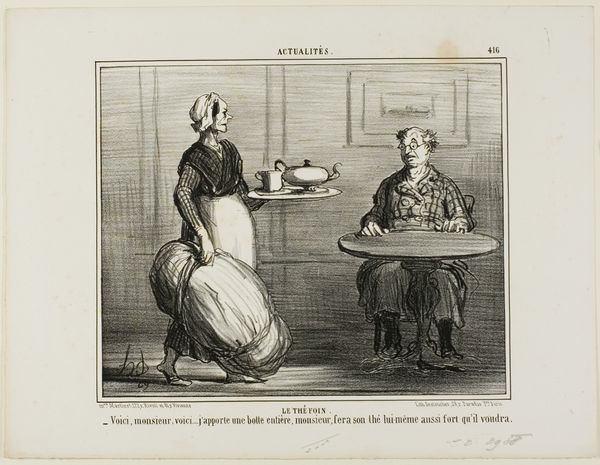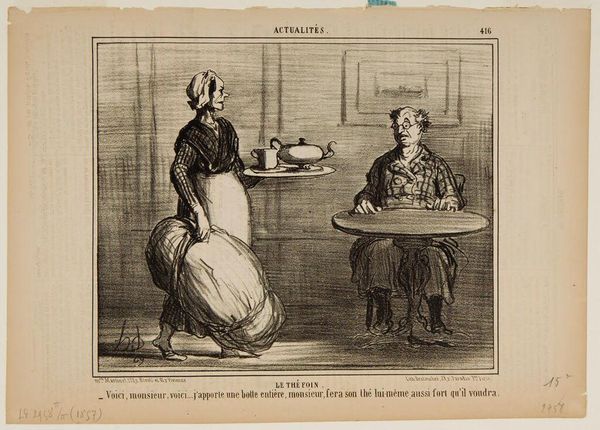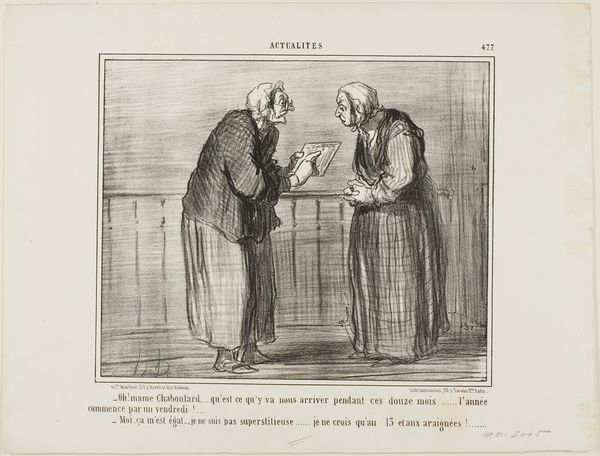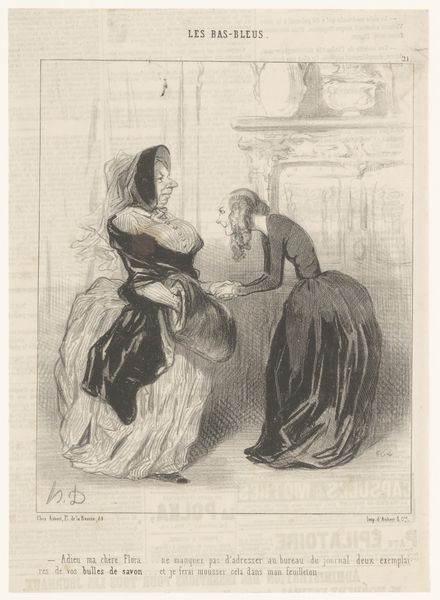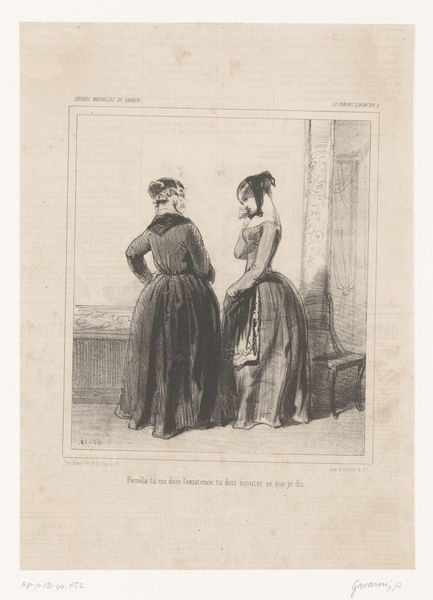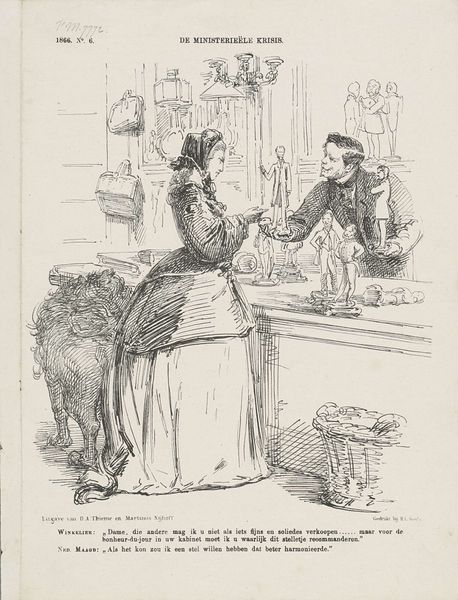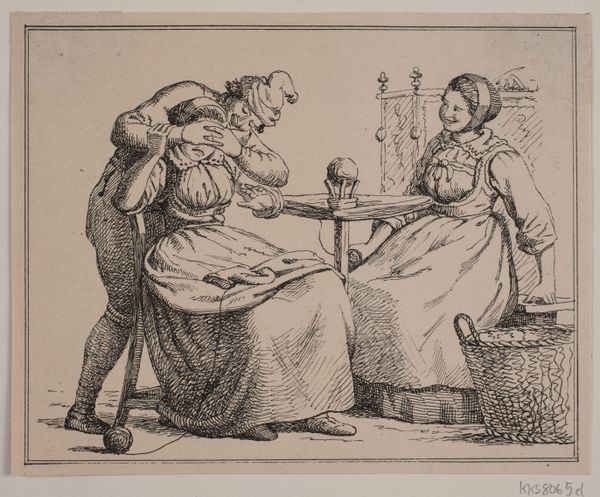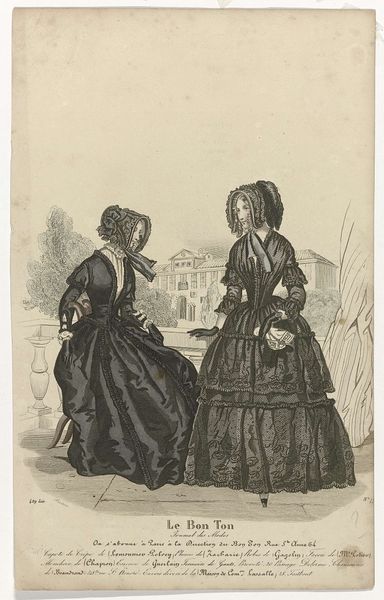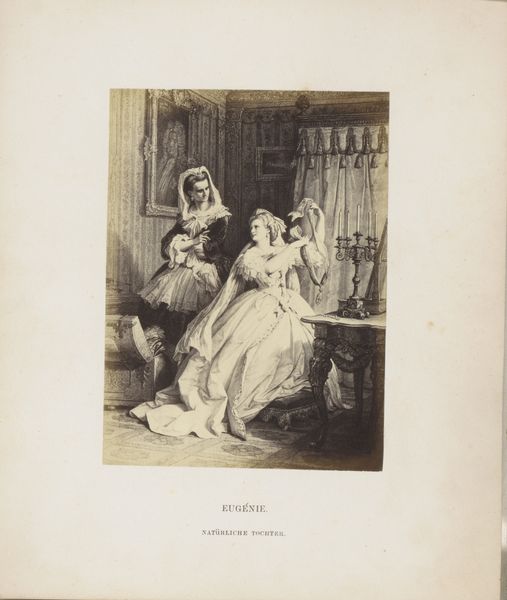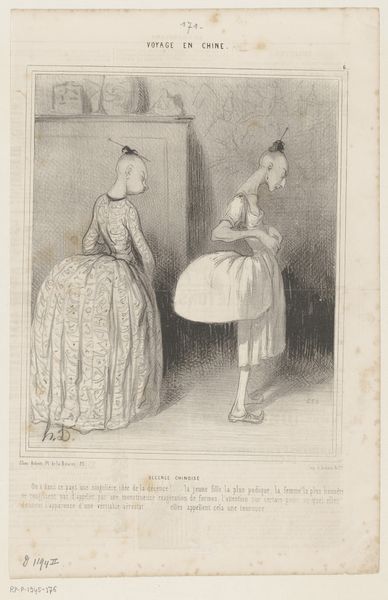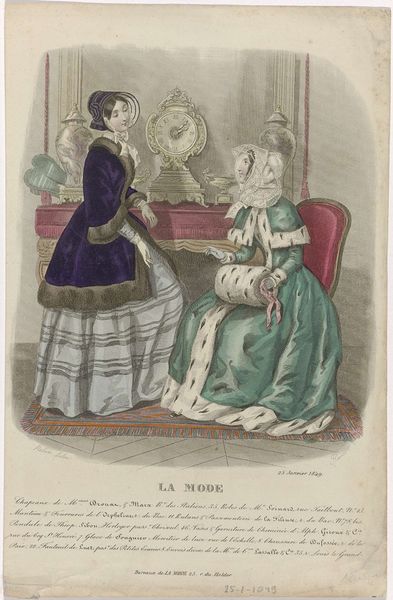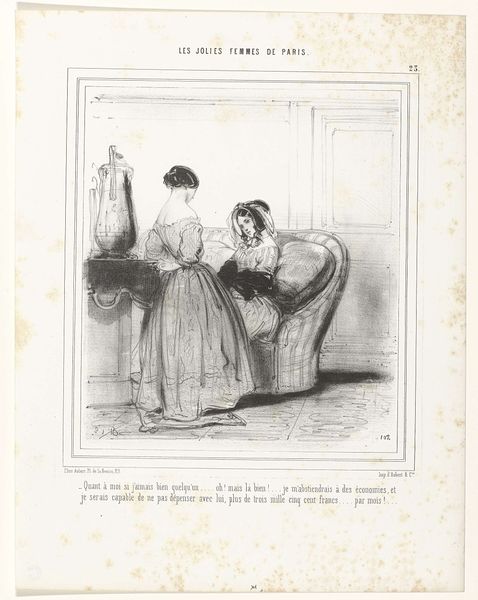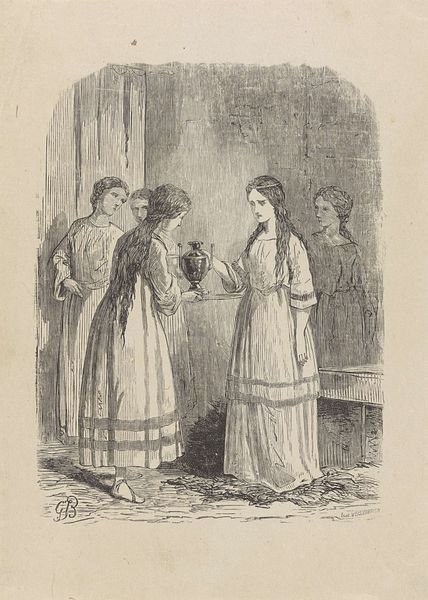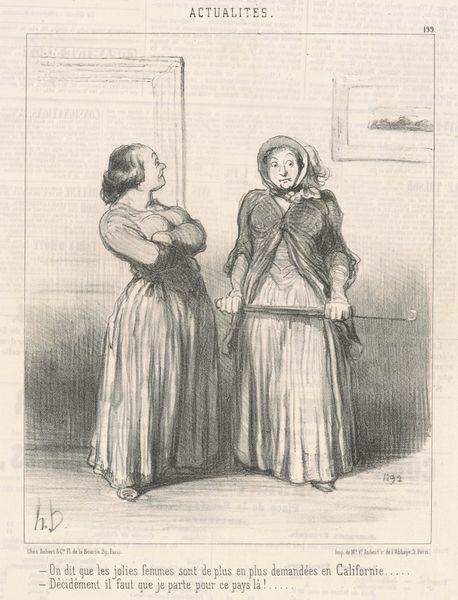
“- Madeleine, how could you ever accept a piece of meat like this one? - Madame, the butcher told me that the meat commerce will be free, therefore he took the liberty of giving me this piece,” plate 463 from Actualités 1857
0:00
0:00
Dimensions: 205 × 259 mm (image); 272 × 360 mm (sheet)
Copyright: Public Domain
This lithograph was made by Honoré Daumier, a French printmaker, in the mid-19th century. The lithographic process involves drawing with a greasy crayon onto a stone, which is then chemically treated so that only the drawn areas attract ink. It's a process that allows for relatively quick and easy reproduction, perfectly suited to Daumier’s satirical commentary on French society. Here, the stark contrast between the well-dressed woman and her servant, and the less than stellar cut of meat, speaks volumes. The rough, almost coarse lines of the lithograph, reflect the social tensions of the time. Daumier was deeply engaged with the politics of his day. This print implicates a connection between the quality of this cut of meat and the contemporary ideas of "free commerce" and "liberty." The humor is biting, highlighting the uneven distribution of resources and the impact of economic policies on everyday life. By focusing on the material realities of food and labor, Daumier elevates the everyday to a subject worthy of artistic attention, blurring the lines between art and social commentary.
Comments
No comments
Be the first to comment and join the conversation on the ultimate creative platform.
